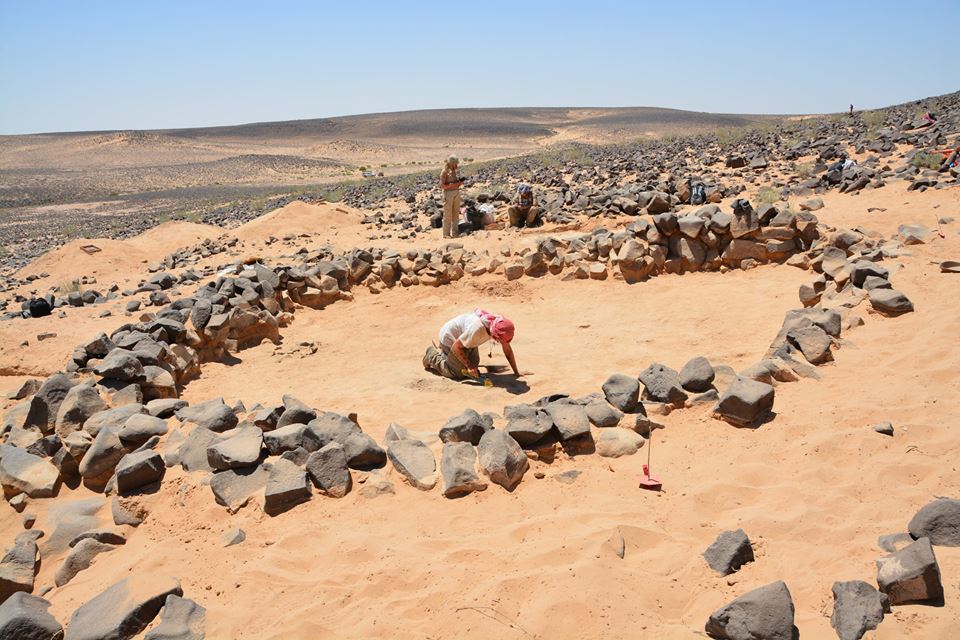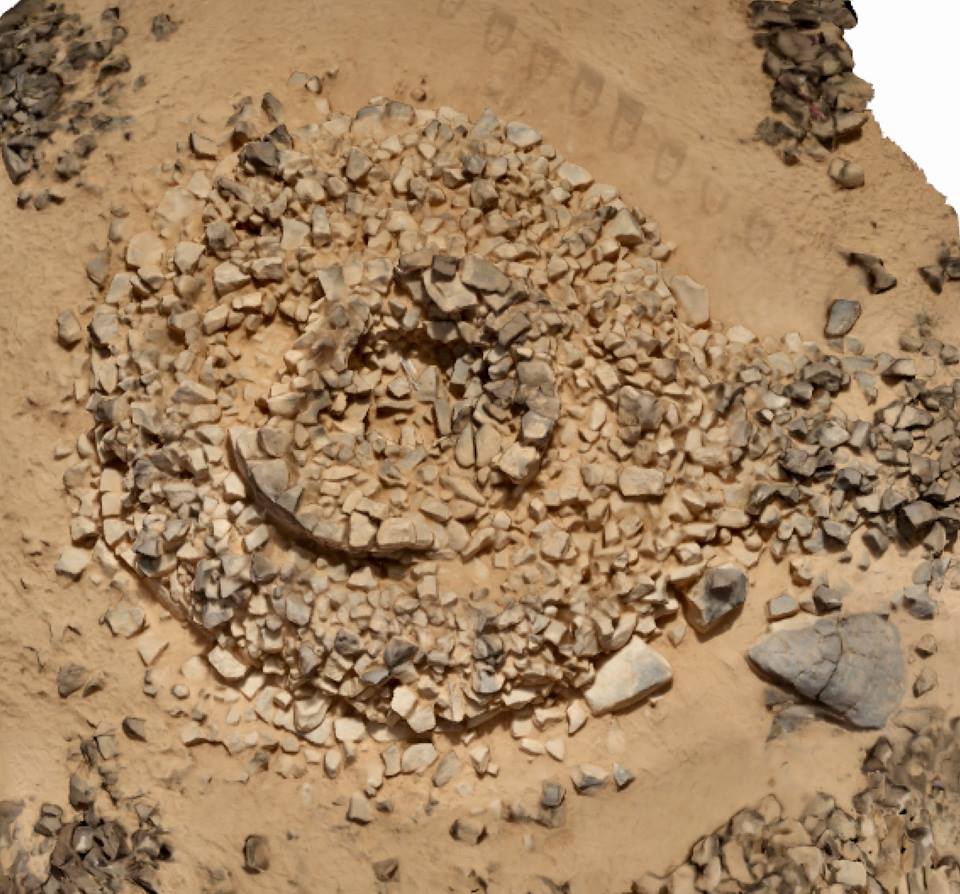Hundreds of Stone Tombs Discovered in Land of 'Dead Fire'

Hundreds of ancient stone tombs, some made with towering, flattened rocks, have been discovered in Jebel Qurma, a desert region in Jordan that is so desolate that one early explorer called it a land of "dead fire."
Though an abundance of people once called Jebel Qurma home, its climate is now inhospitable, and very few people live there."Except for a short period in the spring, the whole of this country looks like a dead fire — nothing but cold ashes," wrote Group Capt. Lionel Rees, an officer in the British Royal Air Force, in an article he published in 1929 in the journal Antiquity.
Many of the tombs are covered by mounds of stone called cairns, while others are more complex and are called "tower tombs," Peter Akkermans and Merel Brüning, both of Leiden University in the Netherlands, wrote in an article published recently in the journal Near Eastern Archaeology. [See Images of the Stone Tombs at Jebel Qurma]
The tombs are located some distance away from ancient settlements where people once lived. "While the foci of daily living and domestic activity were in secluded areas at the foot of the basaltic uplands or in the deep valleys through which wadis run, it appears that the preferential areas for the disposal of the dead were on the surrounding high plateaus and the summits of the basalt hills," wrote Akkermans, who leads the Jebel Qurma Archaeological Landscape Project, and Brüning.

Tomb robbers have pillaged many of the burials, but archaeologists have been able to retrieve valuable information that provides clues on how human life changed in the region over the course of millennia.
Cycles of life and abandonment?
The team found evidence suggesting that between the late third millennium B.C. and the early first millennium B.C. few people lived in Jebel Qurma. For instance, a cemetery that contains about 50 cairns stopped being used around 4,000 years ago. The "abandonment of the cemetery — and, by association, the places for the corresponding living community — seems to have coincided with the wholesale withdrawal from the Jebel Qurma region," Akkermans and Brüning wrote in the journal article. Recent research reveals that the region was re-inhabited in the early first millennium B.C. by people who did not use pottery, Akkermans said. [In Photos: Ancient Rock Art Found in Jordan's 'Black Desert']
Why people left and then returned to Jebel Qurma about a thousand years later is a mystery, Akkermans said, adding that climate change is one possible reason for their departure and return. "Evidently, climate change or the like came to my mind as well, but at the moment, we simply do not have the data to support or deny this claim. Research into local environmental and climatic conditions is certainly one of my aims for further research in the desert of Jebel Qurma," Akkermans told Live Science.
Sign up for the Live Science daily newsletter now
Get the world’s most fascinating discoveries delivered straight to your inbox.
Another possibility is that people were living in Jebel Qurma during that gap in the archaeological record but their remains have yet to be found. Until very recently, it was believed that people did not return to Jebel Qurma until the mid or late first millennium B.C.; now archaeologists know that people were living in the region during the early first millennium B.C., Akkermans said. Perhaps people didn't return to Jebel Qurma "because they did not leave," Akkermans told Live Science.
Tower tombs
In the late first millennium B.C., people living in this desert began building a type of tomb that was larger and harder to construct. Some of these tower tombs were constructed with stones that weigh 660 pounds (300 kilograms), Akkermans and Brüning noted in the journal article.
The tower tombs are "up to 5 meters [16 feet] in diameter and 1.5 meters [5 feet] high, which differ from the other cairns by their distinct tower-like shape and their clear, straight facade made of large, flattened basalt slabs," wrote Akkermans and Brüning.
Initially, Akkermans thought that the tower tombs were built for elite members of society, but the recent discovery of large numbers of tower tombs shows that this idea is wrong.
Recent fieldwork "made clear that these tower tombs are not exceptional, but quite common in the Jebel Qurma region and the desert at large," Akkermans told Live Science, adding that "they do not seem to be restricted to specific members of society in antiquity." Why the tower tombs appeared is "not yet fully understand."
Original article on Live Science.

Owen Jarus is a regular contributor to Live Science who writes about archaeology and humans' past. He has also written for The Independent (UK), The Canadian Press (CP) and The Associated Press (AP), among others. Owen has a bachelor of arts degree from the University of Toronto and a journalism degree from Ryerson University.









